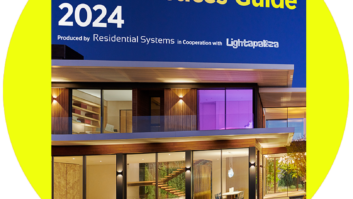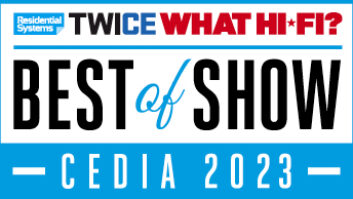When we became Crestron dealers five years ago, I was excited to have a solid whole-home automation solution that would allow us to penetrate the larger, more complex projects. I had only a little bit of knowledge of the amazing ecosystem we were bringing on board. With everything under one roof, including AV control, lighting, shading, HVAC, and video distribution, we have been able to seamlessly offer amazing solutions. That was expected. However, the MyCrestron platform was not something I expected. With everything from DDNS services to remote system monitoring tools, keeping on top of client projects and having reliable remote access and diagnostic abilities has changed my view on everything.
Also by Todd Anthony Puma: Blending Custom and Consumer
My colleague, Mark Feinberg, owner of Home Theater Advisors, has been trying to convince me of the benefits of SnapAV’s OvrC platform for years. However, with the tools available from Crestron, combined with Panamax Blue-Bolt and a VPN router, I didn’t see the need to make a change. But he kept raving, and eventually I caved and brought some product in to test out. Suffice it to say that I was blown away.
Combining the power of MyCrestron and the full OvrC platform with the OvrC Hub, Wattbox IP power conditioners, Araknis networking gear, Autonomic media streamers, and Luma surveillance products has been a game changer for us. In one interface, either a website or app, I can see and connect to every OvrC device in the home to troubleshoot issues, upgrade firmware, confirm functionality, and know what ports and third-party devices are connected and which are not. I can even remotely log into many third-party devices through the OvrC Hub, from AVRs to ISP routers to Lutron processors, all without having to roll a truck or leave a computer on-site.
Right in the OvrC app, we can see which network ports are active and reboot PoE ports to help bring devices back online. We can also see what is connected wirelessly to which Araknis AP and the signal strength for that device, which helps troubleshoot when a client calls complaining about sub-optimal WiFi connectivity. The possibilities are amazing, and SnapAV keeps adding functionality, like Luma Surveillance and Autonomics. I’m hoping to eventually be able to see which power outlets on a Wattbox are pulling current so we can tell if a device is on or off. And wouldn’t that be great for programming against on/off status of things like game systems — when the game system turns on, turn on the AV system?!
Also by Todd Anthony Puma: Make Life Easier for You and Your Clients
With OvrC, I can give my techs access to selective client homes, which makes offering service plans even more effective. I can create groups for clients on service plans and assign them to techs, so they can be available 24/7 (or any time frame we agree upon) to service specific client needs after hours. It is win-win-win — clients love that they have a single point of contact and I love that that the point of contact is not me for EVERY client, and my staff enjoys the additional pay when they volunteer to be involved in after-hours support.
I feel like we are only knee-deep into what OvrC can do for us, and can’t wait to find more ways to incorporate it into our everyday installs and our client service practices.







